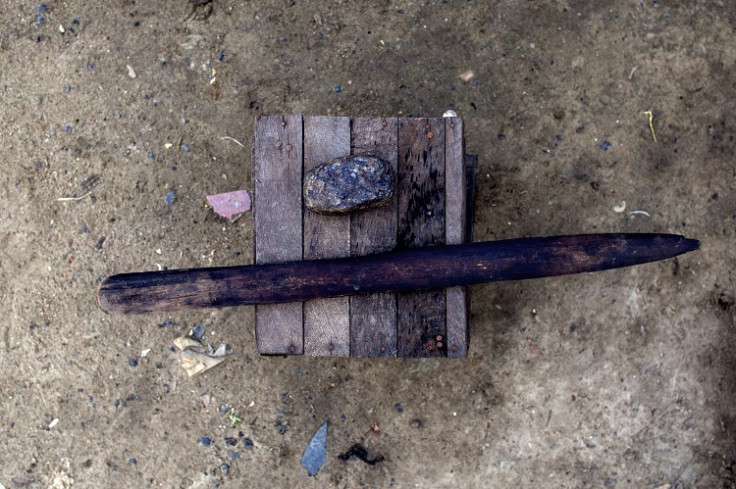Breast ironing: From Britain to Cameroon young girls are mutilated to hide puberty

The practice of breast ironing is increasing in the UK, with at least 1,000 girls across areas inhabited by west African communities at risk of being subjected to the treatment . The alarm was raised by Conservative MP for Rossendale & Darwen, Jake Berry, who claimed at least a quarter of children's service departments in the UK were not trained to deal with this practice.
Home Office minister Karen Bradley said some people might feel reticent to put a halt to such practices due to cultural reasons, but added the UK government was "absolutely committed" to halting breast ironing.
What is breast ironing?
Breast ironing, also known as breast flattening, is a form of mutilation by which girls' breasts are pounded and burned with heated objects, such as spatulas, stones and hot spoons. Girls are typically subjected to the practice twice a day for weeks or months, but the frequency of the practice varies from area to area.
The aim is to prevent breasts from growing and hide puberty signs to make girls less attractive to men. Breast ironing is mostly carried out by family members – mainly women – who want to protect girls from sexual assaults and early pregnancies that could bring shame to the family and result in stigmatisation. In some instances, breast ironing is also practised to prevent early marriages and encourage girls to pursue their education.
Breast ironing is widespread in Cameroon, where at least half of the female population undergoes the practice, according to the United Nations (UN). Breast ironing is also present in other African countries, including Benin, Chad, Ivory Coast, Guinea-Bissau, Guinea-Conakry, Kenya,Togo and Zimbabwe.
According to Cameroon-based NGO Gender Empowerment and Development (GeED), girls as young as eight are subjected to the practice in the country, mostly in urban areas. The NGO identified the practice as a case of family violence and female-to-female violence as it is imposed on young girls without their consent. The UN defined the practice as one of five under-reported crimes related to gender-based violence.

Consequences
Breast ironing is very painful and can cause tissue damage, deformities and psychological problems. Other effects include: high fever, abscess and cysts, breasts pimples on and around the nipples, itching, milk infection and the complete disappearance of the breasts.
"Saying that breasts are destroyed is an understatement. Adolescents are traumatised, mutilated. This is a serious damage not only on their physical integrity, but also on their social and psychological well-being. And we must stop it," UK-based organisations CAME Women and Girls Development Organisation (CAWOGIDO) said. The NGO added the practice often proves futile against prevention of pre-marital sexual activity.
How to tackle breast ironing
Although Cameroon is signatory of the African Charter on human rights and rights of women in Africa, which include the right to life and physical integrity and protection against harmful traditional practices, the country has not passed any law banning breast ironing.
According to the Feinstein International Center in Massachusetts, as breast ironing is practised to protect young girls and deter male attention, condemnation of the practice would not help eradicate it.
"The situation calls for a three-pronged approach that first, raises awareness and public discussion of the practice; second, educates people on human biology and the futility of breast flattening; and third, addresses the originating conditions of sexual exploitation of girls that cuts across economic, social, and regional divisions in Cameroon and West Africa," the centre said.
© Copyright IBTimes 2025. All rights reserved.






















